
 |
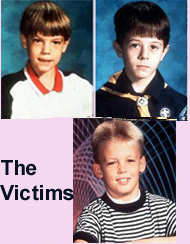 |
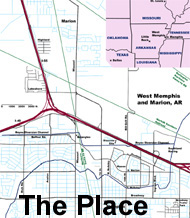 |
 |
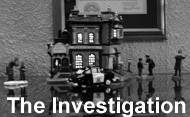 |
 |
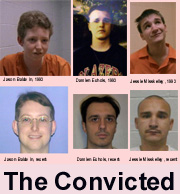 |

![]()
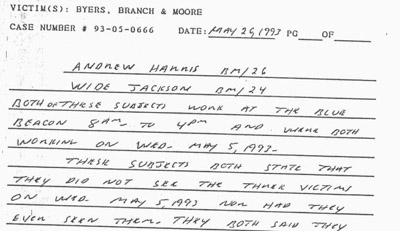
Whodunnit, Part Three: The Hole in the Center of the Case.
The closer one looks at the core of this case, the murkier the picture becomes. The most fundamental steps in a normal investigation weren't performed by the police or else they were performed and were not documented for the defense or prosecution.
The Discovery of the Victims.
The multilayered discovery of the victims is described in great detail here. There are no police statements regarding these events from those who made the discovery, Steve Jones and Denver Reed or from the first officers on the scene, George Philips, Diane Hester and Mike Allen. Among these, only Mike Allen described the discovery at trial. Brief notes were made by Hester at the crime scene.
The Blue Beacon
The children were last seen at approximately 6 pm on Wednesday, May 5th, 1993. Their bodies were discovered the next day. The site where the children were discovered was presented as the site of the murders. The Blue Beacon was an all-night truck wash located approximately 75 yards from the discovery site. Its light blue building can be glimpsed in parts of the crime scene video as the children are being recovered. In spite of its proximity, there are almost no notes from the staff on duty that night. None of the five workers from the evening shift were interviewed individually. The brief notes available include the statement "were real business," although bay two closed at 6:30 pm leaving only bay one open. Bay one logged only nine trucks during the evening shift from 4 pm to 7:18 pm when the records end.
One of the early scenarios considered the possibility that a trucker killed the children. The logs of the trucks visiting the Blue Beacon are dated 5-5-93. The logs available in the police files only went to a last entry at 7:18 pm, leaving out the most critical time of the evening. The truck receipts corresponding to these logs are all dated 5-4-93. Furthermore, specific receipts are missing, even though they were photocopied together on the same page.
![]()
Receipts from the Blue Beacon. The receipts are dated 5-4-93 (pink underline)
Some numbers are missing (8903220, 22, blue underline) in spite of being
presented on thesame page forwarded to the prosecutor (intake number, green).

Blue Beacon traffic summary (5/05/93, date above portion excerpted).
These entries correspond to the above receipt numbers. The log on this page ends
at 7:18 pm and the next page of the log is not among police documents.
Even odder than the missing information from the critical shift, two workers who finished their shifts at 4 pm on May 5th were interviewed as to what they saw - nothing. [Wide Jackson and Andrew Harris, statement pictured above]
Years later, a reporter tried contacting a Blue Beacon employee in regards to the case and was given the cryptic message that he was not allowed to talk about the case.
Sometime after 8 p.m., a bloodied black man, ensconced himself in the women's restroom at the Bojangles about three-quarters mile from the Blue Beacon. The identity of this individual was never determined. Perhaps this incident was related:
From the above log, a Schneider truck visited the Blue Beacon at 7:04 pm. The receipt for this #890322 is among those that are missing.
The Victims' Families.
Of the various parents and step-parents, only Melissa and Mark Byers and Christopher's biological father Ricky Lee Murray had interview sheets available in the West Memphis police archives. The parents could have commented on potential suspects and suspicious individuals in the area. The prosecution alleged that the victims were stalked, even photographed before the crimes. They alleged that Echols regularly passed through the area. Several of the parents and step-parents were involved in the search and statements from them as to what they had seen that night could have been critical evidence. Recently, Terry Hobbs has stated that he had never been interviewed as to his actions that night.
Beyond this, a sad truth is that murder victims are often killed by someone they know. The family members and those known to the family were potential suspects.
There are minimal notes from the immediate neighbors of the victims. None of Steve Branch/Terry Hobb's neighbors were interviewed. (The exception to this is Christopher Morgan who became a suspect after allegedly confessing in California). These neighbors could have described suspicious individuals in the neighborhood, the final activities of the victims, or the criminal activities of families of the victims. Several neighbors further away named Mark Byers as a suspect as a result of his drug dealing or other criminal activities.
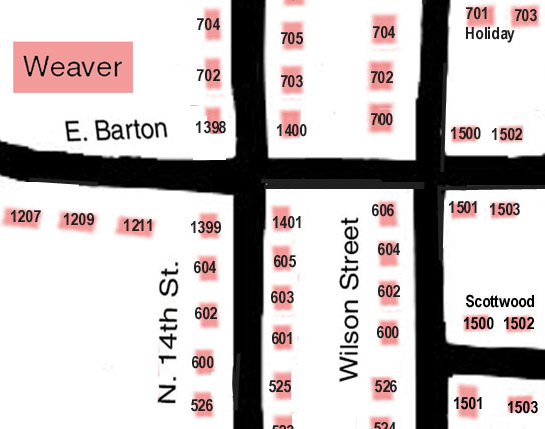
The Moores lived at 1398 E. Barton, the Byerses at 1400 E. Barton.
Above diagram adapted from overhead map and city directory listing addresses.
Total for the 14 nearest neighbors to the Byerses and Moores: 7 not interviewed; 6 "nothing" or "no info;" 1 brief note. The neighbors of the Hobbs were not interviewed.
Missing and Altered Evidence.
The police logs for 7 am to 3 pm shift were altered. The documents available from the evidence room of the West Memphis Police Department appear to have a heavy "photocopy effect," as though copies of copies were made, obscuring what was on the originals. This lossy reproduction is not the case for the other logs. One entry at 9:22 a.m. was whited out. How can this be proven?
The upper portion of the police logs were filled out with the name of the officers, their numbers, and the date and then photocopied, presumably to save time in filling out the log entries. The date on the logs that cover the time period in which the victims were discovered was incorrectly listed as 4/6/93 with the 6 drawn over, probably changed from a 5. Because the names were filled in before copying, the lines that define the boxes with information should be equal (or vary equally with slightly different exposures). When one line is sketchy, it should be similarly sketchy in the next page. If a line that defines the box disappears, it means that this area was whited out after the upper portions were filled in but before the document was placed in the evidence. (I went to the evidence room myself and examined and made copies of the log that was available.)

Above, a small section of page four of the 7 am to 3 pm log of May 6th, 1993 as copied from the evidence room at the West Memphis Police Department, with calls starting at 9:19 am. The 7 to 3 logs were incorrectly dated 04-06-93 (and the 6 seems to be written over) but go on to describe the search and discovery of the victims as took place on May 6th. The upper portion, highlighted in brown is part of the section where the names and numbers of the individual officers were written in, prior to photocopying. This allows the person filling in the forms to not have to fill in the repeating information with each page. (Compare to the highlighted section below which has the exact same writing.) After the initial photocopying, the dispatch calls were filled in.
Below is the next page of the station logs. The area highlighted is identical to that above and the calls logged in begin at 10:23 am. The other pages continue in this manner through page 7 which includes the time of discovery. The images presented above and below demonstrate that the background of the pages should be equal, the entries different.

Below, the same documents as were shown above, this time a larger section. Officers Sanders and Reese (254 and 252, respectively, numbers highlighted in green) received a call at 9:22 a.m. The "Information On Call or Broadcast" entry for this call is blank. This isn't necessarily damning, there could have been a failure to fill this in. What is damning is that the line below the information is missing. (As pointed out by the arrows highlighted by blue). This could only have happened if the area was whited out.
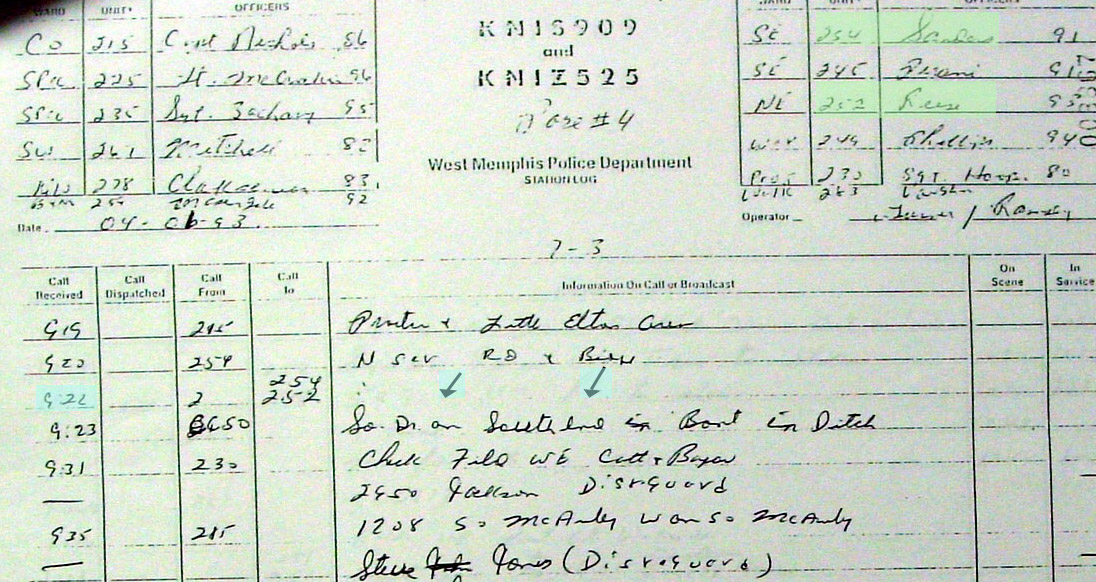
Since some lines are sketchy or nearly absent, that same line needs to be compared to those on other pages. The next page the line is mostly present (as pointed out by the arrows highlighted in blue).
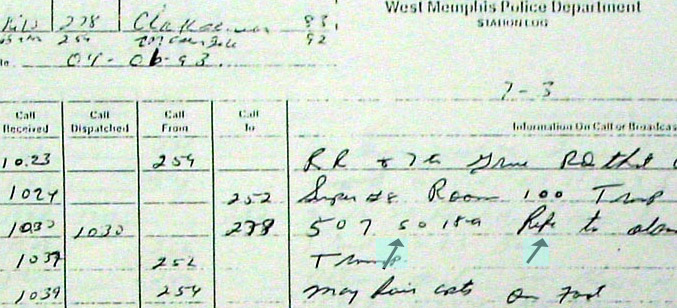
Page five of the 7 am to 3 pm station logs. The corresponding line is present in this page and the other pages.
Mark Byers 5/19/93 interview with Lieutenant Sudbury was taped. At the end of the transcribed part of the interview there is a hush and heavy breathing corresponding to the section being manually taped over. (This erasure was evident on the tape when I made a copy of it from the evidence room in 2004.) The full interview is available at: markbyersstatement.
Filling the Holes.
Did the holes in this case come from laziness, extreme incompetence in the investigation or was it wilful?
Laziness was not a problem. The police generated thousands of pages of interview and evidence in this case, travelling to other cities to run down rumors from little children.
While incompetence could describe not interviewing someone such as Terry Hobbs, it doesn't account for why the Blue Beacon employees on the correct shift were not interviewed while employees on other shifts were or why the log sheets stop before the critical time.
If it was wilful, what were the police trying to hide? I am going to present one theory at length relating to the corruption in the Crittenden County Drug Task Force (CCDTF). This is not equal to saying that the CCDTF was directly involved in the murders. It is to suggest that a full investigation surrounding the murders would have uncovered information damaging to the CCDTF.
The CCDTF was a high stakes operation. "During 1992, the drug task force seized more than $1 million in cash, 74 vehicles, $4925 in property, $81,075 in stolen property and 37 guns." [West Memphis Evening Times, February 10, 1993]
The reason for the large amounts of drugs passing through is geographical. To travel across the US east to west or west to east, there are only so many locations to cross the Mississippi. In the large swath of territory between south of the Ohio River and north of Baton Rouge there are only six sites with automotive bridges and only two if you want to maintain the anonymity of the interstate. West Memphis is one of these sites. On top of that, West Memphis has a second north to south interstate passing through it. West Memphis has both the guaranteed passage of big time drug trafficking with the type of tight-knit corruption that you can have in a small town.
In 1993, the CCDTF consisted of twelve officers.
The CCDTF became intimately involved in the investigation of the crime. Five of the above officers were present at the crime scene (along with two future members). The investigation into the child murders was run out of the CCDTF office. The door to door interviews of the area surrounding the Robin Hood woods and the Mayfair Apartments were conducted by CCDTF officers. Sudbury would go on to provide key interviews of suspects Damien Echols, Mark Byers, James Martin and others. Together with Steve Jones, probation officer and discoverer of the bodies of the victims, Sudbury headed to Echols house the day after the discovery.
This seems odd. In addition to the fact that there was nothing at the crime scene that suggested human sacrifice, in other contexts Sudbury comes across as a hard-nosed officer and not particularly superstitious.
In 1993, the CCDTF was also involved in an ongoing investigation regarding the appropriation of seized items and a small amount of missing cocaine, their second investigation in two years. Fellow officers pointed fingers at one another. Sudbury was accused by a fellow officer of planting drugs to seize a vehicle and by others of keeping seized guns, food stamps, a refrigerator, a fishing pole, along with other items. [Interviews, CCDTF investigation, February and April 1993] In years to come, other members of the drug task force would be tried for embezzling tens of thousands of dollars.
Drug contraband was often hidden aboard trucks. In a single seizure from a semi at Lehi in west Crittenden County in 1998, $3,166,199 in cash was taken. [Arkansas Highway Police v. Crittenden County Prosecuting Attorney's Office. Case 98-957, Supreme Court of Arkansas] In a recent interview, the West Memphis police stated that they monitored CB chatter as a means of identifying which vehicles to stop.
The Blue Beacon would have made a prime location for searching vehicles. Among those involved in the case of the child murders, several ran car or truck washes and CB stores. Bryan Woody worked at Don's Supershine and Radio World (CB radios). A police call was made regarding an alarm going off at Woody's work address at 4:06 am of May 6th [Station logs, 11 pm - 7 am, May 5th - 6th, 1993]. Otto Bailey, Senior and Junior owned Mr. Clean Truck Wash. Otto Bailey, Senior was described as an avid CB user. A tip was received regarding Otto Bailey, Sr.
This tip was followed up on and dismissed.
Among Bailey Senior's prior arrests were distribution of a controlled substance, assault and contributing to the delinquency of a minor.
It is my contention that the CC-DTF needed to avoid scrutiny at the Blue Beacon because of ongoing and profitable drug task force investigations. Given the fact that members of the task force didn't hesitate to keep for themselves moderately expensive items such as guns, it is reasonable to assume they would be susceptible to taking larger amounts and huge sums of money passed by.
On the day the victims were discovered, the CC-DTF initiated what was described as their largest drug sting to date. From the front page of the May 10, 1993 edition of the West Memphis Evening Times.
Although there may have been others, there were two suspects who were noted to be confidential informants to the WMPD: Mark Byers and David Wren. Byers was also a confidential to the Organized Crime Unit of the Memphis Police Department [Mark Byers interview, 5/19/93]
David Wren was a suspect in part because of his prodigious criminal history, his residence in the Mayfair Apartments, and because he was the brother of Frankie Knight. According to one interview, Frankie Knight was near the crime scene on the evening of the fifth:
Another interviewee spoke of statements she heard Knight make.
Kacie Crawford stated she overheard Frankie Knight say that his brother killed the children. "[Crawford] had overheard a conversation in which Frankie Knight stated that his brother is the person who killed the boys." [Kacie Crawford interview, May 15, 1993] Her statement was emphatically dismissed, the word "Unfounded" written in felt at the bottom. The word "Unfounded" appears to match the writing of CCDTF head, Tony Miller.
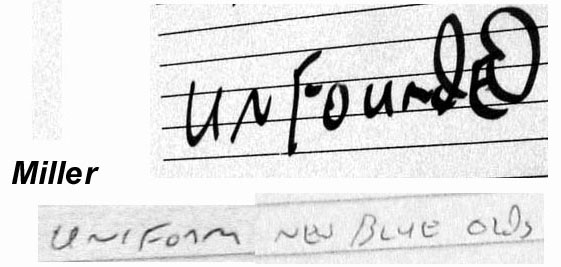
Above, the word "unfounded" as written on the statement of Kacie Crawford.
Below, a sample of the writing of Captain Tony Miller, head of the CC-DTF.
Connections.
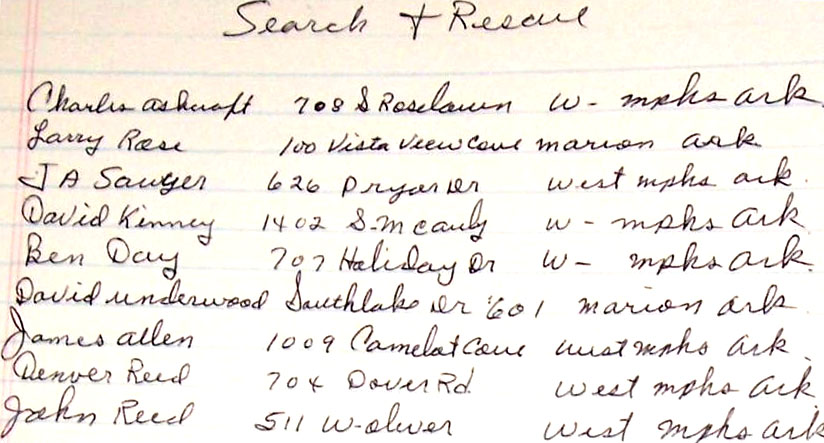
John Reed lived at 511 W. Oliver in West Memphis, next door to James Sudbury and his wife, Deborah. They were the only immediate neighbors to the Sudburys' house at 513 W. Oliver. The street ended here and there were no houses on the opposite side.
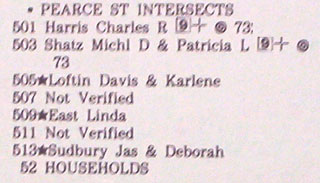
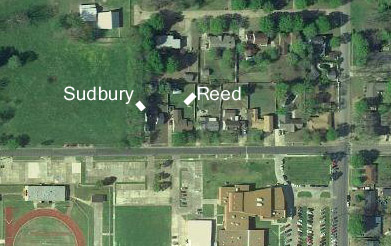
W. Oliver, 1993 West Memphis City Directory Overhead view of the end of West Oliver Street
Why is this significant? During Sudbury's decertification hearings in 2003, he was confronted with this story:
Sudbury was accused of multiple acts of covering up evidence of his son's involvement with illegal drugs. If, as Lt. Vaughn stated, Sudbury's son was running a meth lab next to his house, the only address next to his house was that of John Reed. John Reed was not only a member of the Search and Rescue, but the son of Denver Reed, who was present at the time of the discovery. This would have the sons of Lt. Sudbury and the son of the discoverer of the bodies together at the crime scene.
Sudbury denied the proximity of the meth lab - but he also disingenuously suggested that he didn't have any neighbors. "First of all, I live; my house is adjacent to the parking lot of the high school. Officer Vaughn would have you believe that this material found in my back yard, I guess, when it was actually found three blocks from my residence. And may I add, that my son has never been arrested or accused of any drug violations that I am aware of." [ibid]
Did this take place next to his house? Sudbury went on to say his house was adjacent to the parking lot of the high school, the meth lab was three blocks away, his son had never been arrested,

|
Copyright © 2010 Martin David Hill
|